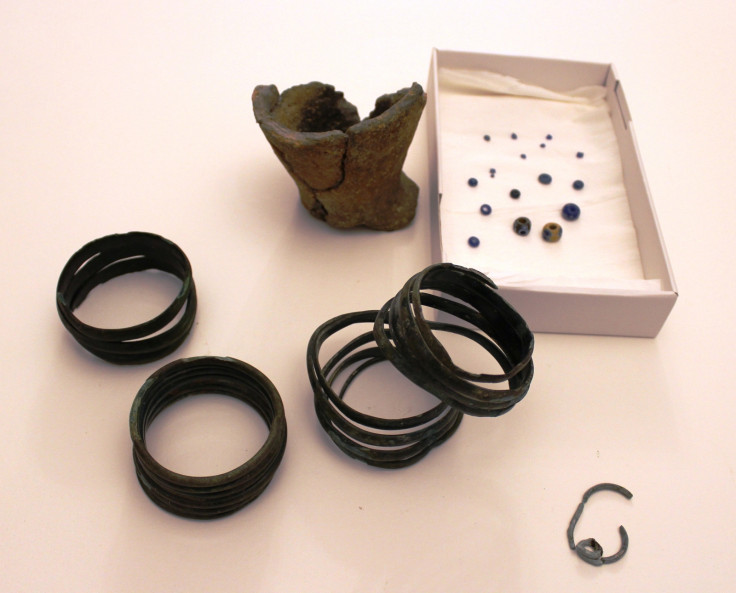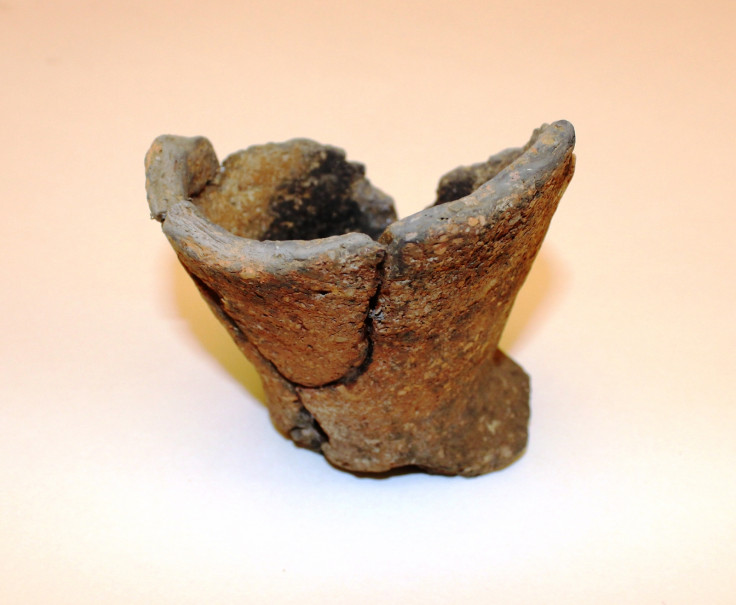Buried treasure: 2,500-year-old hoard of bronze bracelets unearthed in Poland
The hoard was buried to prevent it being stolen in 500 BCE, but the owner never returned.

Several bronze spiral-shaped bracelets and glass beads known as 'peacock eyes' dating from the Iron Age have been discovered near Krosno in southern Poland.
In 500 BCE, the possessor of the treasures buried the jewellery in the valley by a small stream, deep in the forests of Poland's Lower Beskidy Mountains. Now a small village called Lubatowka stands near the site.
The hoard was discovered by metal detectorists searching for WWI and WWII artefacts in the Lubatowka area. They found one bronze bracelet, which they brought to the Podkarpackie Museum in nearby Krosno. The museum's archaeologists returned to the site to excavate it more fully.
"We found two other bronze bracelets, four fragments of bronze wire – probably from an ornament or a pendant – nine glass beads and eight pieces of glass beads of an eye-shape, with so called peacock feather ornamentation," Katarzyna Krępulec-Nowak, a researcher at the museum told IBTimes UK.
"We think this is a typical hoard hidden and protected against theft."
Alongside the jewellery, there was also a clay pot and part of a container used to extract salt from brine. This gave the archaeologists the only clue to the identity of the person who buried the treasure.
"Probably, a man dealing in salt trade might be its owner, because the nearest saline springs are located a dozen or so kilometres away," Krępulec-Nowak said.

No other archaeological finds have been made in the vicinity, lending weight to the idea that the hoard was an isolated one made out of fear of robbery.
"The location of this hoard in a place that was not suitable for any colonization proves that it was just a place of hiding."
While bronze bracelets were not rare in early Iron Age Poland, the peacock eye beads are much less common in this part of the country. The hoard is only the second to contain the beads in the Subcarpathian region.
It's thought that the treasures originated to the south of Poland, but the culture that made them is much harder to pin down, Krępulec-Nowak said, as no distinctive features of the bracelets have survived.
However, southern Poland was largely under the control of Transcarpathian cultures based in countries such as Slovakia, which so far offers the best guess as to the origin of the treasure.

© Copyright IBTimes 2025. All rights reserved.






















